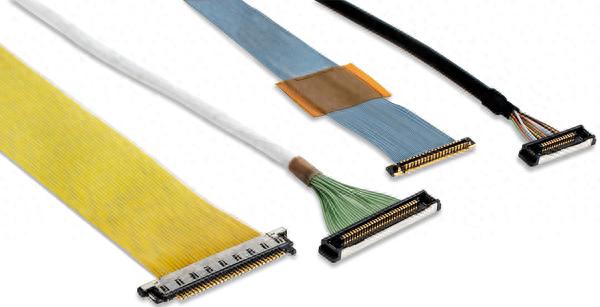Categorization:Harness Component
In the field of high-speed data transmission and precision electronic equipment, ultra-fine coaxial cables (Micro Coaxial Cable) are favored for their small size and high performance. They are widely used in laptops, tablets, mobile phones, medical imaging equipment, industrial testing instruments, and high-definition camera modules. To understand their impact on signal quality, one must first start with structural design, truly understanding the unique advantages of this cable material in high-speed interconnections.
The structural characteristics of extremely fine coaxial beam束
The construction of extremely fine coaxial cables is precise and complex, mainly consisting of the inner conductor, insulation layer, shielding layer, and outer sheath. The inner conductor typically uses silver or tin-plated high-conductivity copper wire to achieve efficient transmission of high-speed signals. The insulation layer employs materials with excellent dielectric properties, such as polytetrafluoroethylene (PTFE) or polyethylene (PE), to reduce signal attenuation and dielectric loss. The shielding layer is mainly made of woven copper mesh or aluminum foil, which can effectively resist external electromagnetic and radio frequency interference, ensuring signal purity. The outermost sheath is made of wear-resistant and high-temperature-resistant materials, such as PVC or TPE, to enhance overall flexibility and mechanical protection capabilities. Due to the wire diameter being as small as 0.3mm or even finer, extremely fine coaxial cables can complete complex wiring in extremely limited spaces, providing flexible and reliable transmission paths for micro-devices.
The influence of structure on signal quality
The structure of each layer in extremely fine coaxial cables directly determines their signal performance. Firstly, the accuracy of impedance matching is the core factor affecting signal integrity; good impedance control can reduce signal reflection and distortion, especially suitable for high-speed interfaces such as LVDS, MIPI D-PHY. Secondly, the density of the shielding layer plays a decisive role in anti-interference ability; high-density shielding not only prevents external noise from entering but also avoids signal leakage, which is particularly important for 4K or 8K image transmission. In addition, the selection of conductors and insulating materials affects the attenuation rate of high-frequency signals; high-purity copper and low-loss insulating materials can significantly reduce signal attenuation, making transmission more stable. Flexibility is also a key indicator affecting reliability; extremely fine coaxial cables can still maintain stable performance in repeated bending or dynamic motion, thereby extending the overall service life.
Typical Application Scenarios
In laptops, extremely thin coaxial cables are used for high-speed signal transmission between the motherboard and the display, ensuring smooth image quality and accurate color reproduction. In miniature devices like medical endoscopes, they not only have high flexibility but also enable high-definition image transmission in confined spaces. Drone camera modules also benefit from their lightweight characteristics, reducing flight load while ensuring stable and reliable long-distance video transmission. These applications reflect the core status of ultra-thin coaxial cables in modern high-tech products.
Extremely thin coaxial cables have become indispensable key components in the field of high-speed data transmission due to their miniaturized structure, high signal integrity, and excellent anti-interference performance. Their design not only reflects the precise integration of materials and processes but also represents the trend of electronic interconnection technology towards high density and high-speed development. In the future, with the popularity of 5G communication, AI devices, and high-resolution imaging systems, the demand for extremely thin coaxial cables will continue to grow.
I am[Suzhou Huichengyuan]Long-term focus on the design and customization of high-speed signal cable harnesses and ultra-fine coaxial cable harnesses, committed to providing stable and reliable high-speed interconnect solutions. If you have any related needs or want to learn more, please contact:Manager Zhang 18913228573 (WeChat same number)。